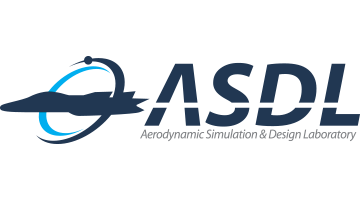Biomimetic Aerodynamics
Flapping motion has been considered as a fascinating aerodynamic subject to many scientists and engineers because of its potential applicability to various propulsive devices or next-generation micro-aerial-vehicle. In order to uncover its curious unsteady behavior, many researchers have conducted experimental or computational studies on the unsteady aerodynamics of various flapping motions, such as periodic oscillating airfoils, insect's and/or bird's wing motions, and so on.

It is the pattern of vortical flows that plays an important role in generating unsteady aerodynamic forces and determining the efficiency of flapping motion. Thus, detailed analysis of vertical structure should be carried out to physically understand unsteady flapping aerodynamics. Moreover, it has been reported that conventional aerodynamics based on quasi-steady assumption could not be applied to insect's flapping motion.

Recently, we have been researching to develop a FMAV by utilizing the complex flow mechanism of these insects. It has better maneuverability and better aerodynamic characteristics than the existing fixed wings or rotors in small aircraft of 20 cm or less that mimic the flight mechanism of small birds or insects. In our laboratory, we design a creative mechanism for the systematic development of the performance improvement winged body, and conduct research on the optimal design using analysis and experiment.



Fig. 5. FMAV (ASDL) (left) / Fig. 6. Flapping drive mechanism (middle) / Fig. 7. Controllability analysis & design (right)
FMAV exploit flexible structures to implement complex wing trajectories mimicking insects. Flexible wings are composed of thin membranes and vein, resulting in fluid-structure complex behavior characteristics. Since the aerodynamic performance of the wing is greatly influenced not only by the shape but also by the meterial property, a FSI analysis is required. Therefore, we developed a 3-dimensional FSI program that can simulate flexible wings composed of various materials. Using this program, we analyze parameters such as shapes or materials that affect the aerodynamic performance of FMAV. In addition, we optimize key design parameters derived from FSI analysis through analysis and experimental ways.

Fig. 8. 3-D fluid structure interaction program

Fig. 9. 3-D wing analysis using FSI program


Fig. 10. FMAV optimal development system






